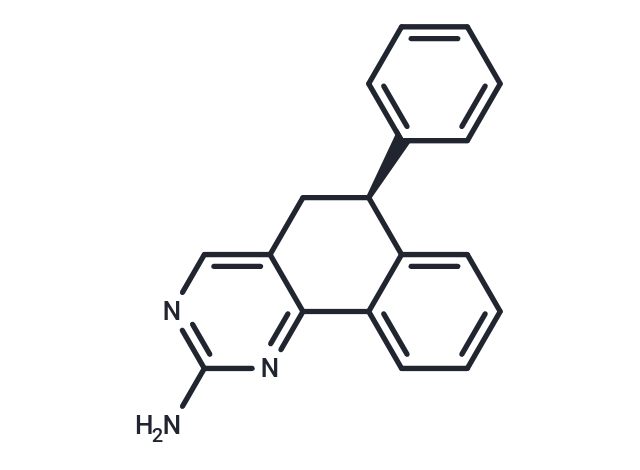- Remove All
 Your shopping cart is currently empty
Your shopping cart is currently empty
ARQ 069
ARQ 069 (3.8-60 μM; for 2 hours) reduces the degree of phosphorylation of FGFR (predominantly FGFR2) in a concentration-dependent manner, without decreasing β-actin. ARQ 069 shows an affinity for FGFR2 of 5.2 μM. ARQ 069 inhibits FGFR phosphorylation in Kato III cells (IC50: 9.7 μM). ARQ 069 targets the inactive forms of FGFR1 and FGFR2 kinases and inhibits their enzymatic activity. When ARQ 069 is preincubated with either phosphorylated FGFR1 or FGFR2, the potency of ARQ 069 in inhibiting Pyk2 phosphorylation is markedly reduced, with IC50 values determined to be greater than 30 and 24.8 μM for FGFR1 and FGFR2, respectively. ARQ 069 exhibits at least a 20-fold preference for binding to the unphosphorylated, inactive forms of FGFR1 and FGFR2.

ARQ 069
| Pack Size | Price | Availability | Quantity |
|---|---|---|---|
| 25 mg | $1,520 | 6-8 weeks | |
| 50 mg | $1,980 | 6-8 weeks | |
| 100 mg | $2,500 | 6-8 weeks |
Product Introduction
| Description | ARQ 069 (3.8-60 μM; for 2 hours) reduces the degree of phosphorylation of FGFR (predominantly FGFR2) in a concentration-dependent manner, without decreasing β-actin. ARQ 069 shows an affinity for FGFR2 of 5.2 μM. ARQ 069 inhibits FGFR phosphorylation in K |
| Targets&IC50 | FGFR2 unphosphorylated:1.23 μM, FGFR2 autophosphorylation:1.9 μM, FGFR1 autophosphorylation:2.8 μM, FGFR1 unphosphorylated:0.84 μM |
| In vitro | ARQ 069 (3.8-60 μM; for 2 hours) reduces the phosphorylation of FGFR, predominantly FGFR2, in a concentration-dependent manner without affecting β-actin[1]. It exhibits an affinity for FGFR2 at 5.2 μM[1] and inhibits FGFR phosphorylation in Kato III cells with an IC50 of 9.7 μM[1]. ARQ 069 targets the inactive forms of FGFR1 and FGFR2, inhibiting their enzymatic activity. Preincubation with phosphorylated FGFR1 or FGFR2 significantly reduces ARQ 069's potency in inhibiting Pyk2 phosphorylation, with IC50 values over 30 μM for FGFR1 and 24.8 μM for FGFR2. ARQ 069 shows a 20-fold preference for binding to unphosphorylated, inactive FGFR1 and FGFR2[1]. ARQ 068 is the R-enantiomer, while ARQ 069 is the S-enantiomer[1]. |
| Molecular Weight | 273.33 |
| Formula | C18H15N3 |
| Cas No. | 1314021-57-2 |
| Storage | Powder: -20°C for 3 years | In solvent: -80°C for 1 year | Shipping with blue ice. |
Calculator
In Vivo Formulation Calculator (Clear solution)
Dose Conversion
Tech Support

Copyright © 2015-2024 TargetMol Chemicals Inc. All Rights Reserved.


